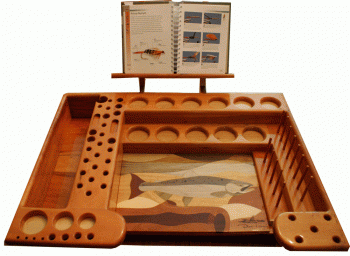Casting in fly fishing: 4
 In fly fishing, a great number of special casts are meant to evade problems like trees behind the angler (roll cast), the pulling of the line on the fly by the action of the stream, or to make the fly land more softly. Here are a couple more:
In fly fishing, a great number of special casts are meant to evade problems like trees behind the angler (roll cast), the pulling of the line on the fly by the action of the stream, or to make the fly land more softly. Here are a couple more:
Reach casting involves casting the fly over flowing water, for example a stream. Just before the fly lands, move the arm and fly rod in the upstream direction to arrange the fishing line to reduce apparent drag in the water. This is commonly called ‘mending’ your fly line. This style also allows an experienced caster to pitch curved casts to get the flies into difficult places.
Another style is Spey casting. This requires a longer, heavier two-handed fly rod, referred to as a Spey rod. Spey casting is in essence a large roll cast, developed on the River Spey in Scotland where high banks do not allow space for the usual back cast. Spey casting is best for large rivers when fishing for salmon and large trout such as steelhead and sea trout. The technique can also be used in saltwater surf casting. In all of these situations the angler needs to cast larger flies long distances. The two-handed Spey technique for fly fishing allows more powerful casts, which also avoids obstacles on the shore by keeping most of the line in front of the angler.



















